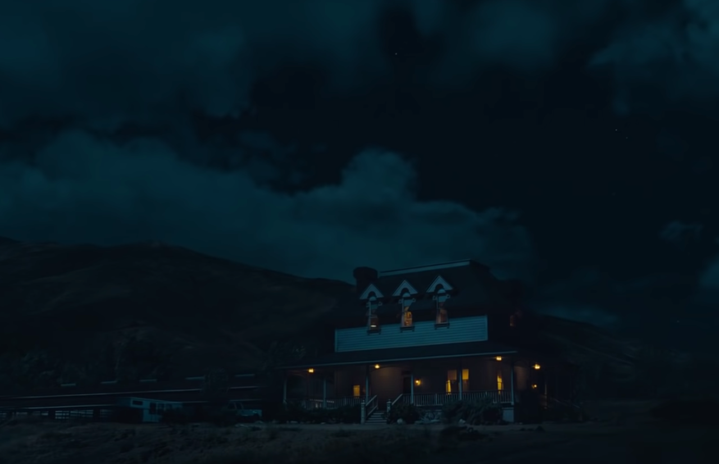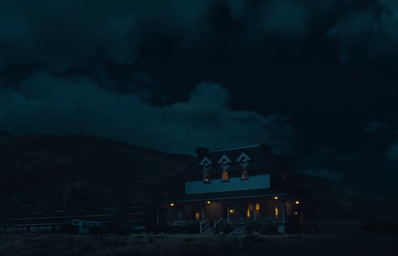Martin McDonagh’s The Banshees of Inisherin sneaked up towards the end of 2022. It quickly got critics’ attention and swept up Golden Globe, BAFTA, and Oscar wins and nominations. The Banshees of Inisherin started as a quiet masterpiece and then exploded when people realized just how special this movie is.
I’ve rewatched this movie more times than should be considered healthy, but Colin Farrell and Brendan Gleeson’s chemistry is simply too hard to get over. Their characters Pádraic Súilleabháin and Colm Doherty, are lifelong friends and regular drinking buddies, when suddenly Colm decides to break things off and Pádraic is unable to deal with the fallout. The first time I watched this movie, I cried after seeing Farrell’s performance showing how hard it is to be left when you can’t comprehend the reason for leaving. Colin Farrell’s Pádraic was so honest and so vulnerable that it is hard to not sit with the movie afterward and wonder how much of you is Pádraic. I mean, I too would go off the rails and eventually burn someone’s house if they called me “dull.”
The second time I watched it, I realized that my sympathy for Pádraic completely overshadowed my view of Brendan Gleeson’s Colm. Colm suffers the curse that every artist knows all too well, the soul-crushing pressure to create something important enough to endure. When the movie ends with Colm being unable to play his music, the thing that started this whole conflict, the idea is planted that he needed an excuse to not achieve the pressure to create something that important. He needed a way out, something to blame when he failed. Colm, in my first watch, seemed hurtful and aloof, but after some (far too deep) reflection, I realized that there are parts of me that feel the same suffocation that Colm feels.
The art of the movie is fully cemented in the bar scene. One of the most poignant scenes that I’ve seen in cinema, the bar scene is angry, emotional, funny, and heartbreaking. And it keeps coming back to the same question: is it better to be remembered for kindness or for greatness? Brendan Gleeson’s character, Colm, argues that niceness does not matter when it comes to the withstanding of art. “Do you know who we remember for how nice they was in the 17th Century?” “Who?” “Absolutely no one. Yet we all remember the music of the time. Everyone, to a man, knows Mozart’s name.”
Pádraic, in a heartbreaking response, argues for his family. He talks about his father and mother, who died years before, and how he remembers them. “And my sister, she’s nice. I’ll remember her. Forever I’ll remember her.” The back and forth of the two characters, each convinced they’re on the right side of the argument, is seamless and littered with heart-punching moments, most provided with Colin Farrell’s realization that his old drinking buddy isn’t the man he thought he was. Martin McDonagh’s brilliant directing work shows when the next shot cuts to a photo of Pádraic in bed, lying below a painting of Jesus, a man remembered for his niceness.
You can’t talk about The Banshees of Inisherin without mentioning the main symbolism that drives the movie: The Irish Civil War. Throughout the film, we see references to the war scattered throughout the movie, like gunshots or the smoldering of land in the back of the scene. Siobhan, Pádraic’s sister, leaves by the end of the movie, representing the mass emigration from Ireland that happened in the 1920s. Since I am not the most well-versed on this topic, I asked my favorite Irish person, Sarah Fitzgerald, about her thoughts on the movie. “The narrative of the civil war that we learn in Ireland is that we all fought for independence, but the civil war was very, very divisive and turned ‘brother against brother’ … the inevitable cycle that ensues after all this conflict is to pick up and move on in a very grim way, which is very typical for Irish history.” The film closes on the scene with our two leads coming to terms with the fact that all the suffering is just the beginning of a fight they’ll take to their grave. They lead themselves to their own mutual destruction; they go too far, to the point of no return. When Pádraic refuses a ceasefire, and we see a shift in the kind man’s character, we realize there is simply too much grief to remember the friendship that Pádraic struggled so much to save.


